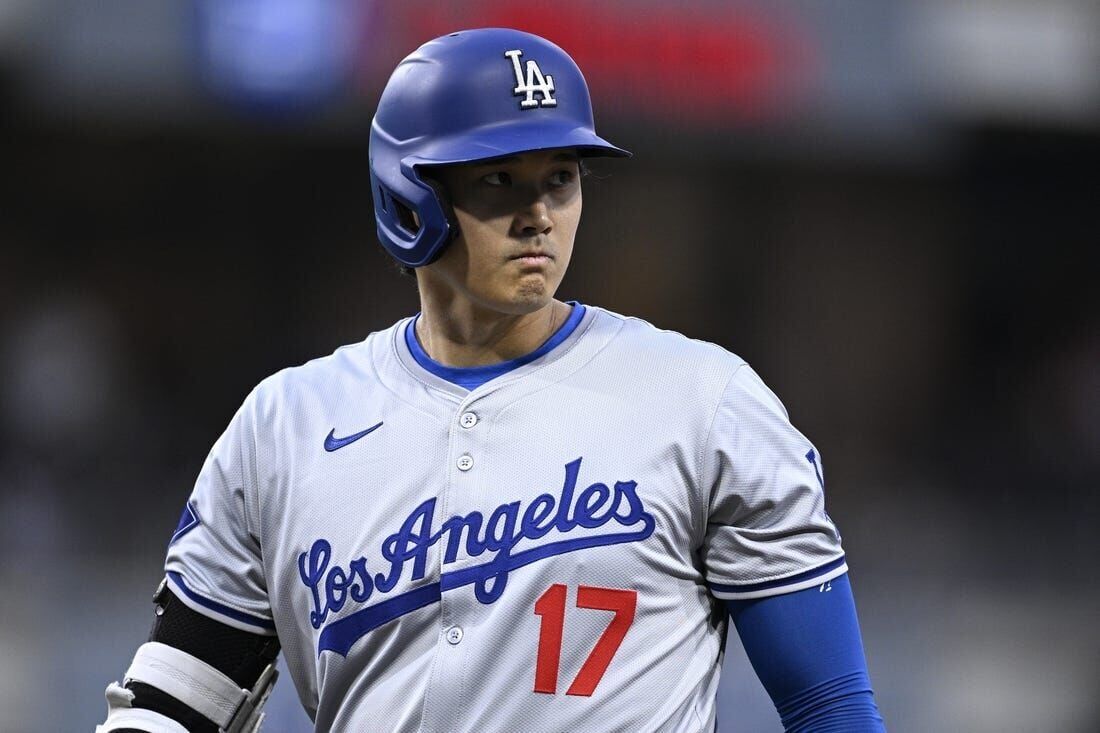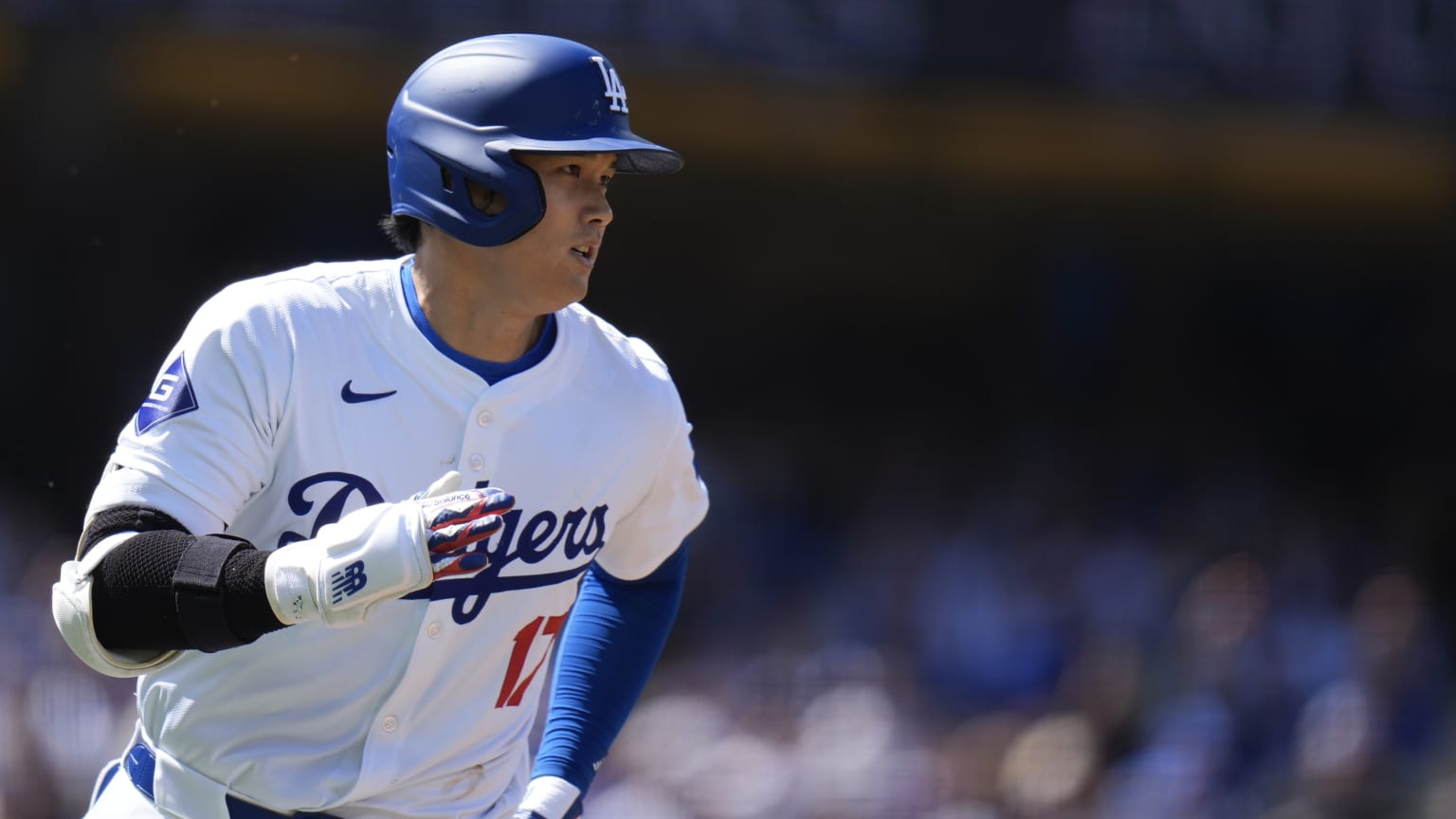The Dodgers star is setting a pace that would put him in the mix for one of baseball’s highest honors. But the title relies on outdated statistics.
Winning the Triple Crown in Major League Baseball — leading your league in batting average, home runs and RBI — is an achievement unlocked only by the elite.
For the first two decades of the 20th century, there was a Triple Crown winner about once every six or seven years. That pace quickened to once every 3½ years during the live-ball era (1920 to 1941), only to slow to once every six to eight years during the integration (1942 to 1960) and expansion (1961 to 1976) eras. After that, Triple Crown winners were only a dream until 2012, when Miguel Cabrera broke a 45-year stretch since the previous Triple Crown winner, Carl Yastrzemski in 1967.

This year, Los Angeles Dodgers designated hitter Shohei Ohtani has a chance to join their ranks.
Ohtani is crushing the ball. He is second in the National League in batting average (.352), tied for fourth in home runs (11) and tied for seventh in RBI (27). It’s May, of course, so there is still a lot of baseball to be played, yet it’s reasonable to believe Ohtani can remain in the mix for the honor for the rest of the season. For example, the latest end-of-season estimates for Ohtani via Dan Szymborski’s ZiPS projection system have Ohtani finishing the season batting .298 (tied for eighth in the NL) with 40 home runs (first) and 116 RBI (first). Szymborski’s projections give Ohtani a 15 percent chance to win the Triple Crown and a 5 percent chance to lead the majors in all three categories.
If he does win the Triple Crown with that stat line, or something similar, it will be with one of the least impressive trio of statistics to do it. This isn’t harsh criticism; it’s simply comparing apples to apples. A batting average in the low .300s would be the worst of any Triple Crown winner — lower than Frank Robinson’s .316 in 1966. Forty home runs is respectable, but there have been players leading the league with 45 home runs or more in eight of the past nine full seasons. You have to go back to 2014 to find a year when both league leaders had fewer than 120 RBI.

In Society for American Baseball Research’s 2002 Baseball Research Journal, Vince Gennaro outlines a quick and easy way to compare Triple Crown winners and figure out who had the most dominant performance. It involves comparing a player’s batting average, home runs per at-bat and RBI per at-bat to the league average and averaging the results. By this method, Paul Hines’s 1878 campaign emerges as the most dominant Triple Crown, while Ted Strong’s 1942 Triple Crown season is the weakest.
Ohtani, if his end-of-season projections hold and he wins the Triple Crown, would have the third-lowest output among Triple Crown winners, relative to the league.
None of this should take away from Ohtani, whose legacy as one of the best two-way players the sport has ever seen is secure. (He’s only hitting this year as he recovers from elbow surgery.) But winning the Triple Crown shouldn’t enhance his legacy in a meaningful way. Here’s why.
Two of the statistics used in this endeavor, batting average and RBI, are antiquated. For example, most will agree that not all hits are equal in value. Two singles are inferior to two home runs, for example; the former might not score any runs, while the latter scores at least two. In addition, front offices and managers have become more comfortable using hitters even if their batting average falls below the Mendoza line — a batting average of .200 that has long served as a benchmark for futility. In 1998, the first year MLB had 30 teams, there were 20 non-pitchers batting .200 or below with at least 100 plate appearances. In 2023, there were 45.
In addition, the significance of the RBI as a tallying metric has diminished, given widespread acknowledgment that an RBI greatly relies on the preceding players’ performance and their capacity to get on base. In other words, it has less to do with a hitter’s talent level and more to do with the lineup around him. For example, the Dodgers typically have Mookie Betts bat leadoff with Ohtani second. Betts is second in the majors in on-base percentage (.440), giving Ohtani plenty of opportunities to drive him in. In fact, the Dodgers lead the majors in RBI opportunities per plate appearance. Of course their players are going to tally a lot of RBI.
Here’s what you should care about: Ohtani leads or is second in the NL in on-base percentage (.463), slugging percentage (.705) and total bases (103). His contributions are estimated to be worth 2.6 wins above replacement per FanGraphs, second highest in the league behind Betts, and he is creating runs at a rate that is more than twice the league average after accounting for league and park effects (206 wRC+ for you fellow stat geeks).
If the latter continues, Ohtani would end 2024 with a hitting performance among the top 50 seasons of all time and the sixth-best performance of the 21st century, trailing only Barry Bonds (2001 to 2004) and Aaron Judge (2022). That might not have the same ring to it as a Triple Crown title, but it would be a more impressive achievement.
#Shohei #Ohtani #chance #win #Triple #Crown
